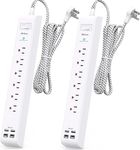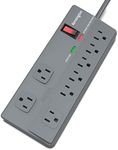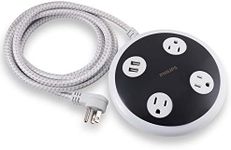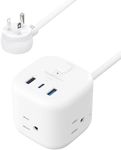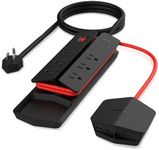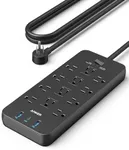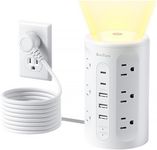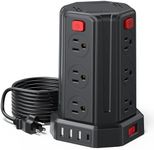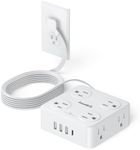Buying Guide for the Best Surge Protectors
Choosing the right surge protector is important for keeping your electronic devices safe from unexpected power surges, which can happen during storms or due to issues with your electrical system. A surge protector acts as a shield, absorbing excess voltage and preventing it from reaching your valuable equipment. When shopping for a surge protector, it's important to look beyond just the number of outlets and consider several key features that determine how well it will protect your devices and how convenient it will be for your needs.Joule RatingThe joule rating tells you how much energy the surge protector can absorb before it stops protecting your devices. Think of it as the protector’s capacity to take hits from power surges. Lower ratings (around 200-600 joules) are suitable for small devices like lamps or phone chargers, while higher ratings (1000 joules and above) are better for sensitive or expensive electronics like computers, TVs, or home theater systems. If you want to protect valuable or critical equipment, always choose a surge protector with a higher joule rating.
Number and Type of OutletsThis refers to how many devices you can plug in and whether the outlets are spaced to fit larger plugs or adapters. Some surge protectors also include USB ports for charging phones and tablets. If you have several devices with bulky plugs, look for a model with widely spaced outlets. Consider how many devices you need to protect and whether you want the convenience of built-in USB charging.
Clamping VoltageClamping voltage is the voltage level at which the surge protector starts to divert excess electricity away from your devices. Lower clamping voltages (like 330V) mean the protector reacts sooner, offering better protection. Higher clamping voltages (like 400V or 500V) may let more voltage through before acting. For sensitive electronics, look for a surge protector with a lower clamping voltage.
Response TimeResponse time is how quickly the surge protector reacts to a power surge. Faster response times (measured in nanoseconds) mean your devices are exposed to excess voltage for a shorter period. Most modern surge protectors have very fast response times, but if you’re protecting high-value or sensitive equipment, check for a response time of 1 nanosecond or less.
Indicator LightsMany surge protectors have indicator lights that show whether the protection is active and if the unit is grounded. This is important because surge protectors can wear out over time, and without an indicator, you might not know if it’s still working. If you want peace of mind, choose a model with clear indicator lights so you can easily check its status.
Cord Length and Mounting OptionsCord length determines how far the surge protector can reach from your wall outlet. Short cords are fine for desktop use, while longer cords are useful if your devices are far from the wall. Some surge protectors also offer mounting holes or brackets, making it easy to attach them to walls or furniture. Think about where you’ll use the surge protector and choose a cord length and mounting style that fits your setup.
